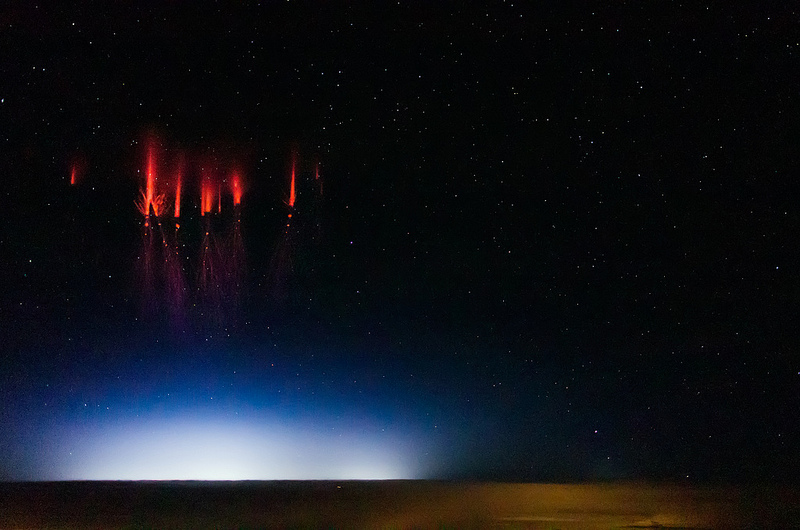Brilliant Red Sprite Lightning Caught on Camera

Amazing new photos and video of the elusive red lightning called sprites are helping researchers understand how the mysterious electric bursts form.
Sprites last less than a second as they dance on the tops of thunderstorms. Many viewers say the clusters of charged particles look like jellyfish — big, red balls with tendrils that reach down into the clouds. But red sprites take many shapes, from crowns to carrots, and researchers still don't why. Because few sprites are seen from the ground, thanks to obscuring storms, scientists are hunting them from the air.
Graduate student Jason Ahrns captured stunning images of sprites during several flights over the Midwest this summer aboard the National Center for Atmospheric Research's Gulfstream V research plane. Ahrns is part of a sprite-hunting team from University of Alaska, Fairbanks, the U.S. Air Force Academy and Fort Lewis College in Durango, Colo. [See Ahrns' Stunning Images of Sprites]
During the research flights, the scientists snapped high-speed photos and video, which will help them to better understand the chemical and physical processes behind the phenomenon.
"It's still not clear what exactly is happening in a sprite, and why there are different kinds of sprites," Ahrns told LiveScience in an email interview.
Sprites could also impact weather and climate by changing conditions in Earth's atmosphere, but scientists don't yet know the scale of the effect, Ahrns said. "We can't answer that without studying them."
While many questions remain about red sprites, some details have emerged since their existence was confirmed in 1989. Sprites form above thunderstorms, when a positively charged lightning bolt leaves the air above a thundercloud that is negatively charged. (Most lightning results from negatively charged bolts). The red color results from the interaction between charged particles and nitrogen, scientists believe.
Sign up for the Live Science daily newsletter now
Get the world’s most fascinating discoveries delivered straight to your inbox.
"There's about one positive lightning stroke for every 10 regular negative strokes," said Ahrns, using the technical term for lightning bolt. "Most big storms probably produce a few sprites, and some produce lots of them. They're probably more common than people think, they're just very difficult to see since they're above the clouds."
Red sprites can race high toward space, up to 60 miles (96 kilometers) above the Earth. Astronauts aboard the International Space Station caught a sprite on camera in 2012. A sprite's red tendrils also reach down into the stratosphere, about 15 to 20 miles (25 to 32 km) above Earth's surface. They look brightest between 40 to 45 miles (65 to 72 km) up.
The sprite hunters worked at night this summer, waiting for thunderstorms to lash Oklahoma and Kansas before launching into the air. The high-speed research cameras ran continuously, always storing the previous second of data so humans with slow fingers wouldn't miss the short-lived sprites. Ahrns also ran his personal camera all night to snap the spectacular images seen here.
"Beyond getting to the right storm and picking the right exposure, it was mostly a matter of luck. The sprites are way too fast for a human to react and hit the button at the right time," Ahrns said.
Email Becky Oskin or follow her @beckyoskin. Follow us @livescience, Facebook & Google+. Original article on LiveScience.










